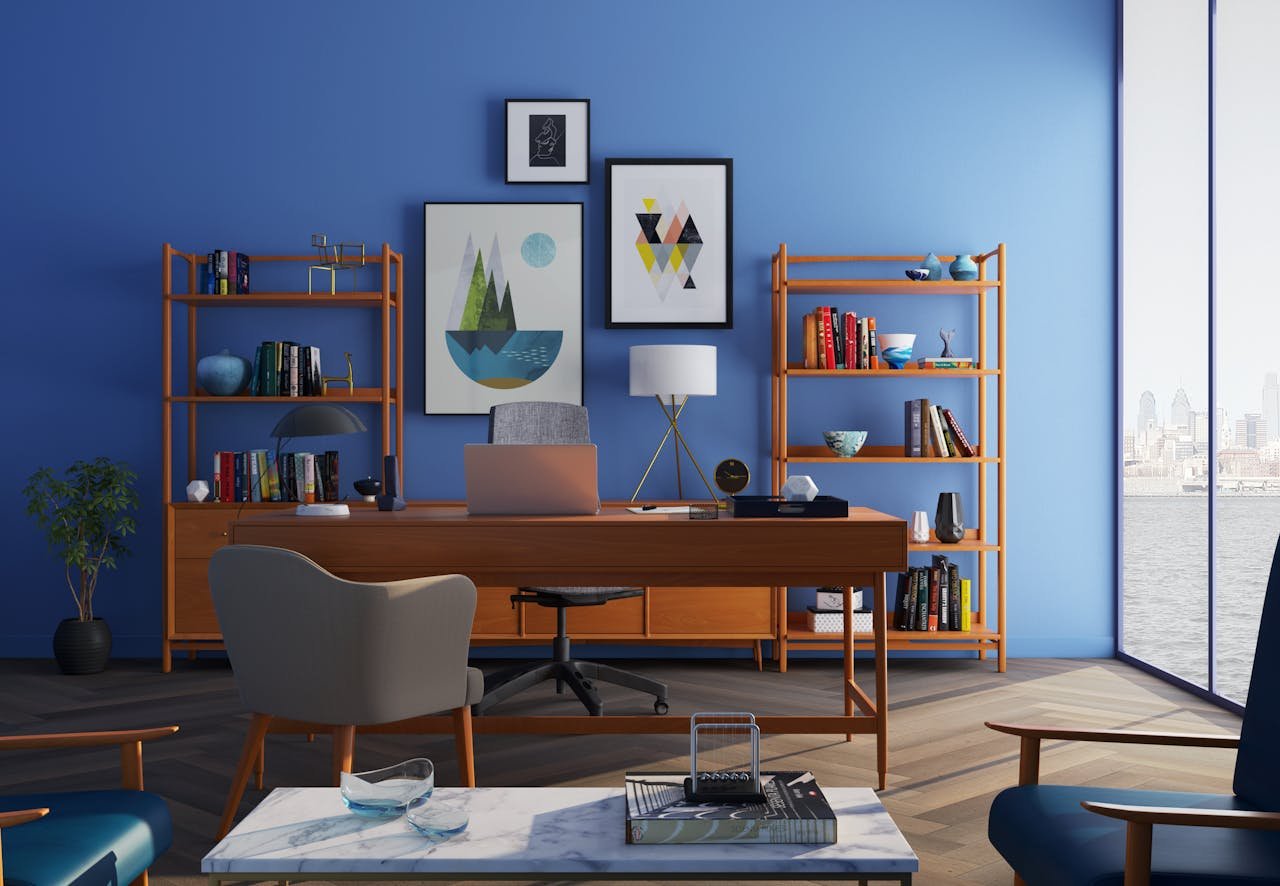A workplace can be much more than just a physical space where you work; it significantly affects productivity, creativity, and employee satisfaction. An office space plays a vital role in shaping the health and productivity of employees, so it is essential to create an office that promotes focus and collaboration. Recent trends show that companies are emphasising office design more, with many companies now investing in modern office designs that merge forms with function.
A functional and purposeful office is a place of productivity, motivation, and employee engagement, not just a workspace. A thoughtfully constructed office can help reduce stress levels, minimise distractions, and improve general job satisfaction. A well-arranged office environment also aids in the formation of an organised company culture, enhances teamwork, and lifts spirits. The right mix of light, colours, and spatial arrangement can foster an environment of creativity and peak performance.
The Evolution of Office Design
Office design has significantly improved over the years. Traditional office spaces with firm cubicles and impenetrable workstations have been replaced by open-plan layouts that promote interaction and flexibility. One of the main reasons behind this trend of dynamic environments is that when employees are surrounded by socialisation and collaboration, they perform better.
Today, the focus is on ergonomic furniture, natural light, and convertible workspaces. Activity-based working has become popular, allowing employees to choose workspaces suited to their tasks. Modern office design plays a key role as companies look to technology-based solutions that innovate how they can stage their day-to-day processes.
Open-concept offices are just one way businesses are reshaping their physical environments. Co-working spaces and hybrid work arrangements have also informed business decisions about the layout and size of physical spaces. Many companies have realised they need flexible office environments for individual and group projects. Multi-purpose areas with flexible seating and adaptable furniture are not uncommon, empowering companies to optimise their available space to meet the diverse needs of their workforce.
How Office Aesthetics Influence Productivity
A nice office layout looks good and helps increase productivity; colour schemes, furniture placement, and lighting influence employees’ feelings and performances. For example, exposure to natural light has been proven to enhance mood and energy and decrease the chances of fatigue.
Noise control is another crucial factor. Open spaces foster collaboration; however, they can lead to distractions. To mitigate this, companies have resorted to soundproof partitions, designated quiet zones, and acoustic panels. Adding greenery and indoor plants also helps promote tranquillity, making the workspace healthier and more inviting.
Psychological aspects of the office design also affect productivity. Specific bright colours can encourage energy and creativity, while softer colours can provide a calming space that helps focus. The deliberate combination of textures and materials (wood, glass, or metal) enhances a space’s depth and creates character while making it more visually interesting and inviting for employees.
The Role of Ergonomic and Modern Office Furniture
One key element of an effective office design is the furniture. Poorly designed or outdated workstations can make employees feel uncomfortable and less productive, and they can even cause health-related problems. In London, ergonomic office furniture is now an increasing priority to ensure employees are comfortable during work hours. Innovations like height-adjustable desks, supportive chairs, and flexible seating arrangements are being incorporated.
Demand for office furniture in London has been on the rise. The city is characterised by business diversity, and people are trying to create functional yet stylish spaces. In short, investing in quality office furniture is about aesthetics, work performance, and employee satisfaction.
Set up ergonomic, minimalist office furniture to prevent back pain and other long-term health issues, such as repetitive strain injury or poor posture. Businesses are quickly adopting solutions such as adjustable chairs with lumbar support, standing desks, and footrests to boost employee comfort. By creating well-being workstations, companies are motivated to reduce absenteeism, boost morale, and positively influence productivity.
The Impact of Flexible Workspaces
Hybrid work models have transformed the landscape of office renovation. Many organisations are gradually moving towards hybrid workplaces, supporting remote and in-office workers. Here, collaborative areas, hot desks and breakout spaces designed for staff to work wherever and however they want have expanded.
Offices are becoming more modular to accommodate workforce changes. Companies are also spending money on furniture and opting for multifunctional pieces that can be easily rearranged to accommodate different working styles. The focus has shifted towards developing an office culture that promotes creativity, productivity, and adaptability.
Flexible workspaces create a sense of autonomy for employees. If workers have a choice in where and how they work, they will usually be more engaged and motivated. This idea benefits businesses with diverse teams that need various setup types to work effectively.
Sustainable and Eco-Friendly Office Designs
Sustainability has become an essential consideration in office design. Many companies choose sustainable materials and energy-efficient solutions to their environmental impact. Businesses are reducing operating expenses and contributing to a cleaner future by using energy-efficient equipment, innovative lighting systems, and recycled materials.
Biophilic design, which integrates natural elements into office environments, is another trend gaining traction. Elements like living walls, indoor gardens, and wooden accents help establish a peaceful and natural vibe that benefits workers and the planet.
Office furniture in London also uses sustainable furniture made from reclaimed materials. Low-emission paints, eco-friendly carpets, and LED lighting are all becoming preferred options for environmentally conscious companies. Embracing sustainability in office design ensures a greener and healthier environment for employees and reflects organisations’ commitment to accountability and care for the environment.
Technology-Driven Workspaces
Technology is also becoming more prevalent in modern office design to promote efficiency. It is key in creating future workplace settings, from brilliant desks that meet user needs to automated climate control systems. Moreover, enterprises are implementing digital collaboration tools to provide seamless communication between employees working remotely and those working from offices.
AI and data analytics are transforming office design to maximise space use. Companies can now analyse day-to-day usage patterns within their various office spaces, allowing them to create environments that match staff behaviours and ensure that every millisecond of an office environment is purposeful.
Offices in 5G smart buildings with IoT gadgets, wireless charging stations, and automated security systems are pioneering a new work style. Design planning is also being enhanced with virtual and augmented reality (VR/AR), which incorporates office layouts before they are utilised.
Conclusion
A creative and effective work atmosphere is mainly dependent on a well-designed workplace. As businesses adapt and change, a new focus on employee satisfaction, flexibility, sustainability, and sustainability design is emerging. By doing so, organisations will create spaces that spark creativity and foster efficiency, thereby driving long-term success.

